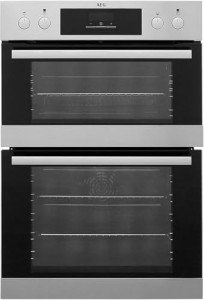The Comprehensive Guide to Built-in Electric Ovens and Hobs
In today's hectic world, modern-day kitchen appliances have evolved significantly to accommodate the tastes and needs of modern homeowners. Among find more information , built-in electric ovens and hobs stand apart for their effectiveness, design, and performance. This post checks out the functions, benefits, setup tips, and maintenance of built-in electric ovens and hobs, along with attending to regularly asked concerns.
Comprehending Built-in Electric Ovens
What Is a Built-in Electric Oven?
A built-in electric oven is a home appliance developed to be installed into a wall or kitchen cabinets, supplying a smooth, integrated appearance in the kitchen. Unlike freestanding ovens, built-in designs conserve space and typically come equipped with extra features such as self-cleaning cycles, convection cooking, and different cooking modes.
Kinds Of Built-in Electric Ovens
- Single Ovens: Ideal for smaller sized cooking areas or those who cook for fewer individuals.
- Double Ovens: Offer more cooking space, suitable for larger households or those who amuse often.
- Mix Ovens: These include both a traditional oven and a microwave, supplying flexible cooking options.
Advantages of Built-in Electric Ovens
| Advantage | Description |
|---|---|
| Space-Saving Design | Fits seamlessly into cabinetry, releasing up counter space. |
| Enhanced Aesthetics | Produces a modern, professional kitchen look. |
| Versatile Cooking Options | Often includes numerous cooking modes including bake, broil, and convection. |
| Energy Efficient | Takes in less energy than traditional ovens. |
Comprehending Built-in Hobs
What Is a Built-in Hob?
A built-in hob is a cooking surface area set up into the kitchen counter top, incorporating seamlessly with the kitchen design. Readily available in electric, induction, and gas varieties, electric hobs are renowned for their precision and ease of use.
Types of Built-in Hobs
- Electric Hobs: Traditional coil elements that heat by means of electrical resistance.
- Induction Hobs: Use magnetic energy to heat just the pots and pans, making them quicker and more secure.
- Ceramic Hobs: Feature a smooth surface area with convected heat underneath, using easy cleansing.
Advantages of Built-in Hobs
| Advantage | Description |
|---|---|
| Fast Cooking Times | Electric hobs heat rapidly, decreasing total cooking time. |
| Easy to Clean | Flat surface enables fast and straightforward cleaning. |
| Long lasting | Typically built to last and endure heats. |
| Versatile Compatibility | Functions well with various pots and pans products. |
Setup Considerations
Installing a built-in electric oven and hob requires careful preparation.
Actions for Installation
- Measure the Space: Ensure the measurements of the oven and hob match the designated space in your kitchen.
- Inspect Electrical Requirements: Consult an electrician to guarantee circuitry can handle the device's power requirements.
- Placement of Appliances: Position the oven at a hassle-free height, normally between waist and eye level.
- Ventilation: Ensure correct ventilation, especially if your oven includes a range hood.
Necessary Tools
- Power drill
- Screwdrivers
- Level
- Determining tape
Safety Precautions
- Constantly detach the power before setup.
- Follow maker instructions carefully.
- Consider hiring a professional for electrical connections.
Upkeep Tips
Maintaining built-in electric ovens and hobs is crucial for durability and performance.
Regular Care Routine
- Cleaning the Surface: Use a soft fabric and manufacturer-recommended cleaner.
- Examining Electrical Connections: Check cords and plug for damages periodically.
- Cleaning up Filters: If the oven has a ventilator, tidy or change the filters as needed.
Repairing Common Issues
| Concern | Possible Solution |
|---|---|
| Oven Won't Heat | Check the power supply and heating aspect. |
| Heating Inconsistency | Inspect the thermostat and oven calibration. |
| Hob Not Heating | Guarantee cookware is suitable and check the power supply. |
Regularly Asked Questions
1. How do I pick the right size built-in electric oven?
Selecting the right size includes measuring your kitchen space and thinking about just how much cooking you generally do. If you captivate regularly or have a large household, choose a double oven.
2. Are built-in electric hobs safe to utilize?
Yes, built-in electric hobs are safe, especially induction hobs which only heat the cookware, minimizing the danger of burns.
3. Can I set up a built-in oven and hob myself?
While it is possible for experienced DIY enthusiasts, working with a professional is suggested, especially for the electrical connections.
4. How often should I clean my built-in oven and hob?
Cleaning should be done regularly after use, with deep cleaning intervals depending upon cooking frequency - normally every few months.
5. Do built-in appliances require unique maintenance?
Built-in appliances need comparable upkeep to freestanding models, but proper care needs to be taken with their surrounding cabinets.
Built-in electric ovens and hobs present a blend of innovation and design, offering performance and modern visual appeals to any kitchen. With correct choice, cautious setup, and routine maintenance, these appliances can boost one's cooking experience for several years. Understanding the functions, advantages, and care requirements can empower house owners to produce the kitchen of their dreams-- effectively and stylishly.
As cooking areas continue to evolve into main centers of the home, choosing the right built-in solutions plays an important role in day-to-day cooking imagination and pleasure.

